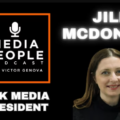A very pressing concern in today’s social media world is Cyberbullying. Here we look at the use of tweets and the power of social media. Twitter Facts: 288 million monthly active users and 500 million tweets sent out per day
It was just this past week that the anti-cyberbullying legislation, Bill C-13, went into effect. Some feel that this new law will tamper with our online freedom, while others see it as necessary to protect peoples’ emotional well-being.
We must keep in mind the many pros of social media. To name but a few, it allows us to build community, connect with old friends, provide support for worthwhile causes and keep in touch with loved ones who live afar. It is also an excellent tool for company exposure (whether small, medium or large) and advertising as a result of the cost-efficiencies and breadth of targeting it allows for. But with all these pros comes the con that is cyberbullying.
The social media world is a free-for-all and anyone and everyone is allowed to state their thoughts and opinions on anything or anyone. Since 2012, Jimmy Kimmel started airing celebrities reading mean tweets that had been written about them. For the most part, it was harmless fun and since famous people are used to being ostracized under the spotlight, most didn’t really seem to take the insults and negative comments to heart.
Now let’s revert back to the last few months where mean tweets gone viral are being read by students. Reactions have been quite different. Through social media, people are becoming aware of how destructive it can be.
Just this past week, we launched Leo Burnett’s Humans for Humans campaign for our pro bono client Raising the Roof. The “reading mean tweets” format is used to empower the homeless who are targeted by people online to give them a chance to speak up for themselves. On the Humans for Humans web site, 10 recruited homeless participants not only read some of the hateful tweets that have been directed at the homeless, but respond to them directly. The site is set up so that videos as well as answers to more direct questions can be shared through social media. With all this eye-opening viral activity and bill in effect, online users just might start thinking twice before they hit enter.
Marnie Shainhouse



